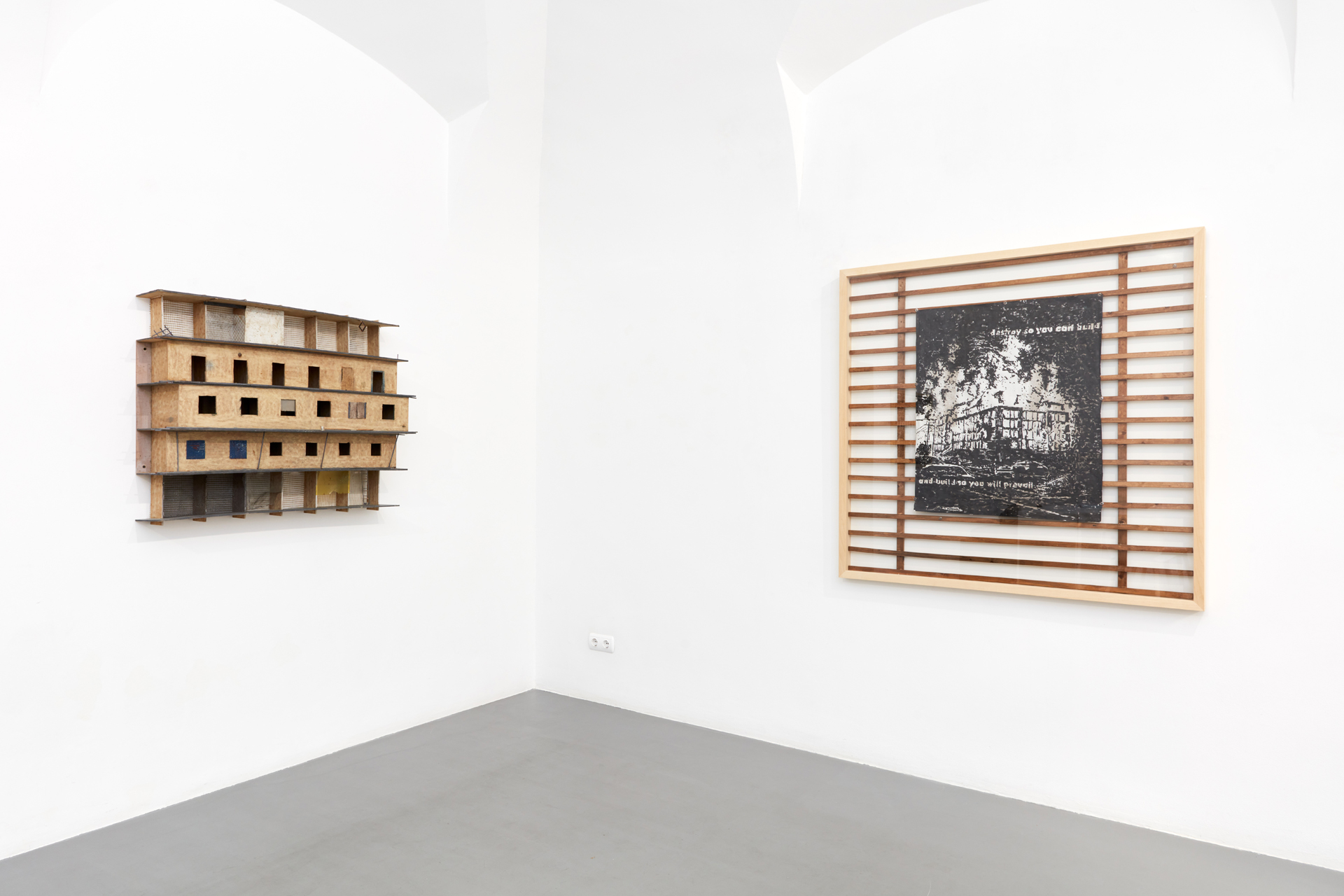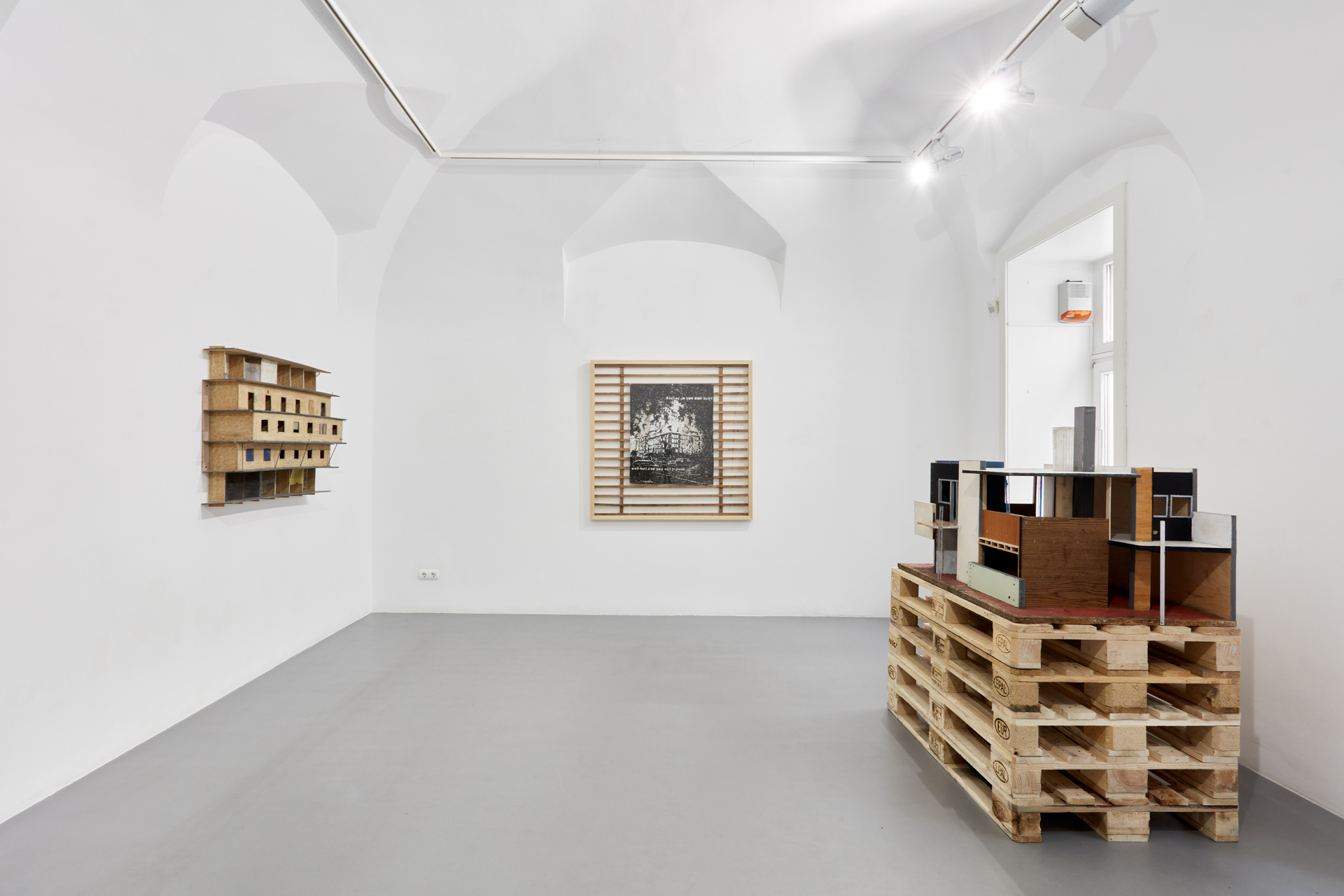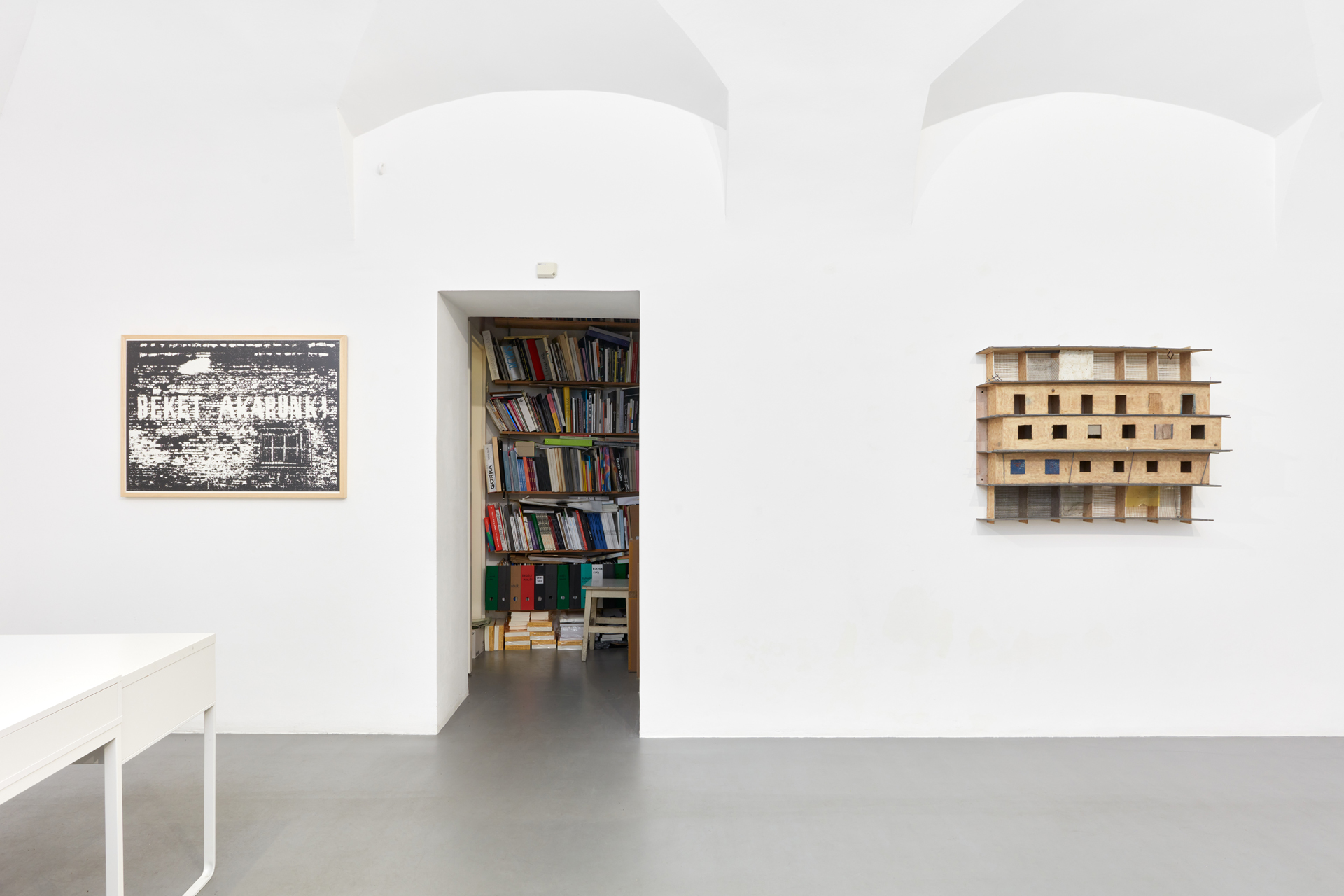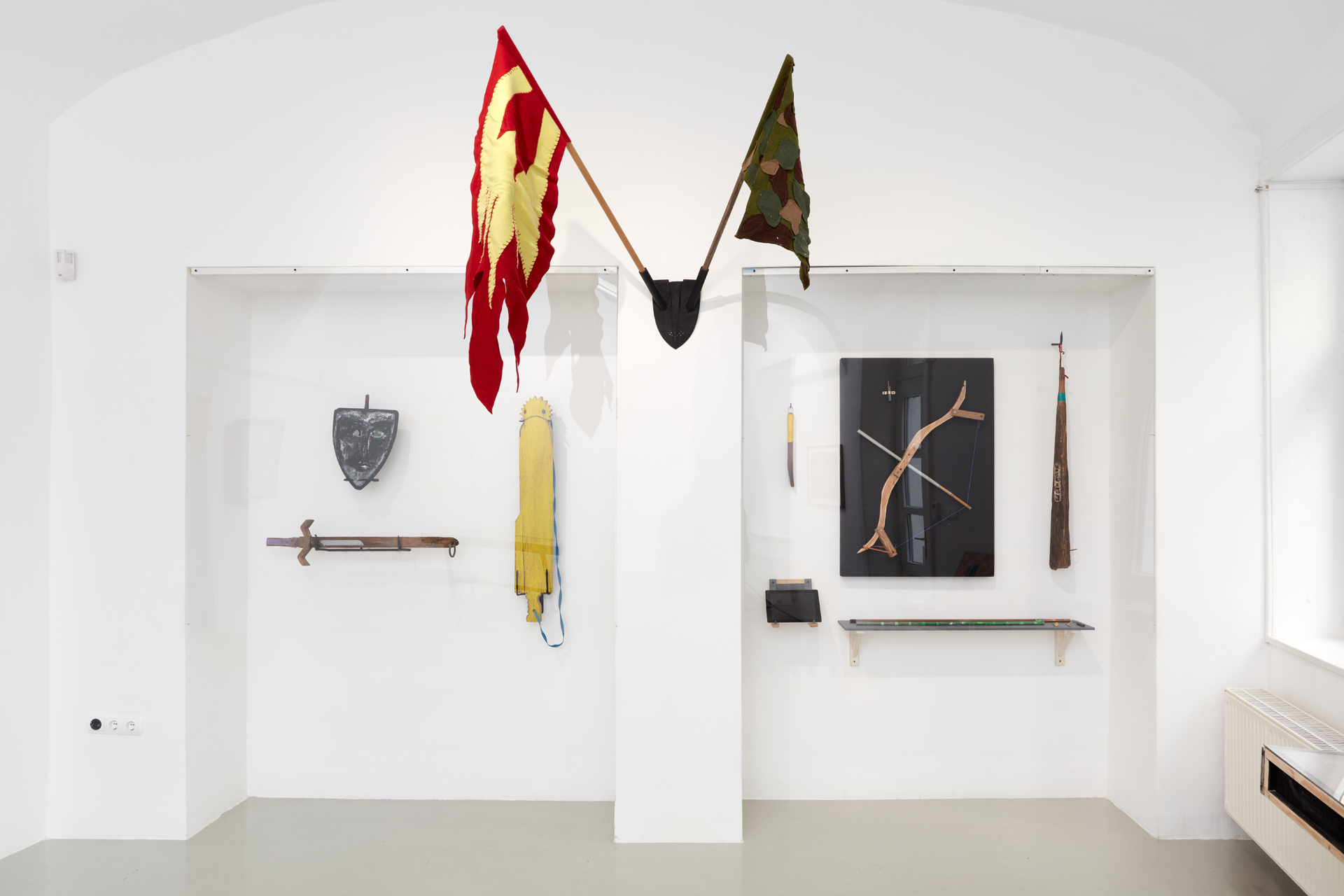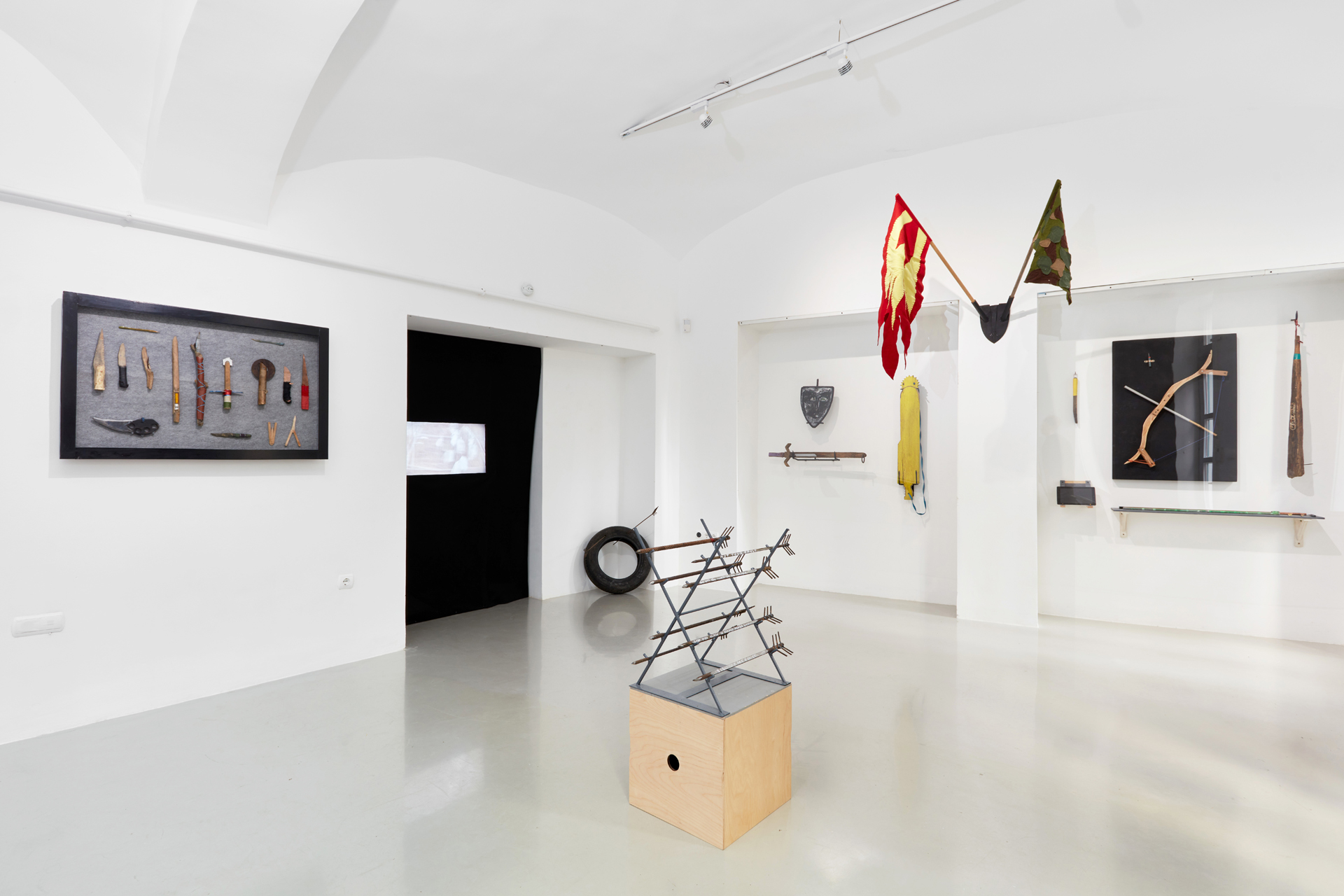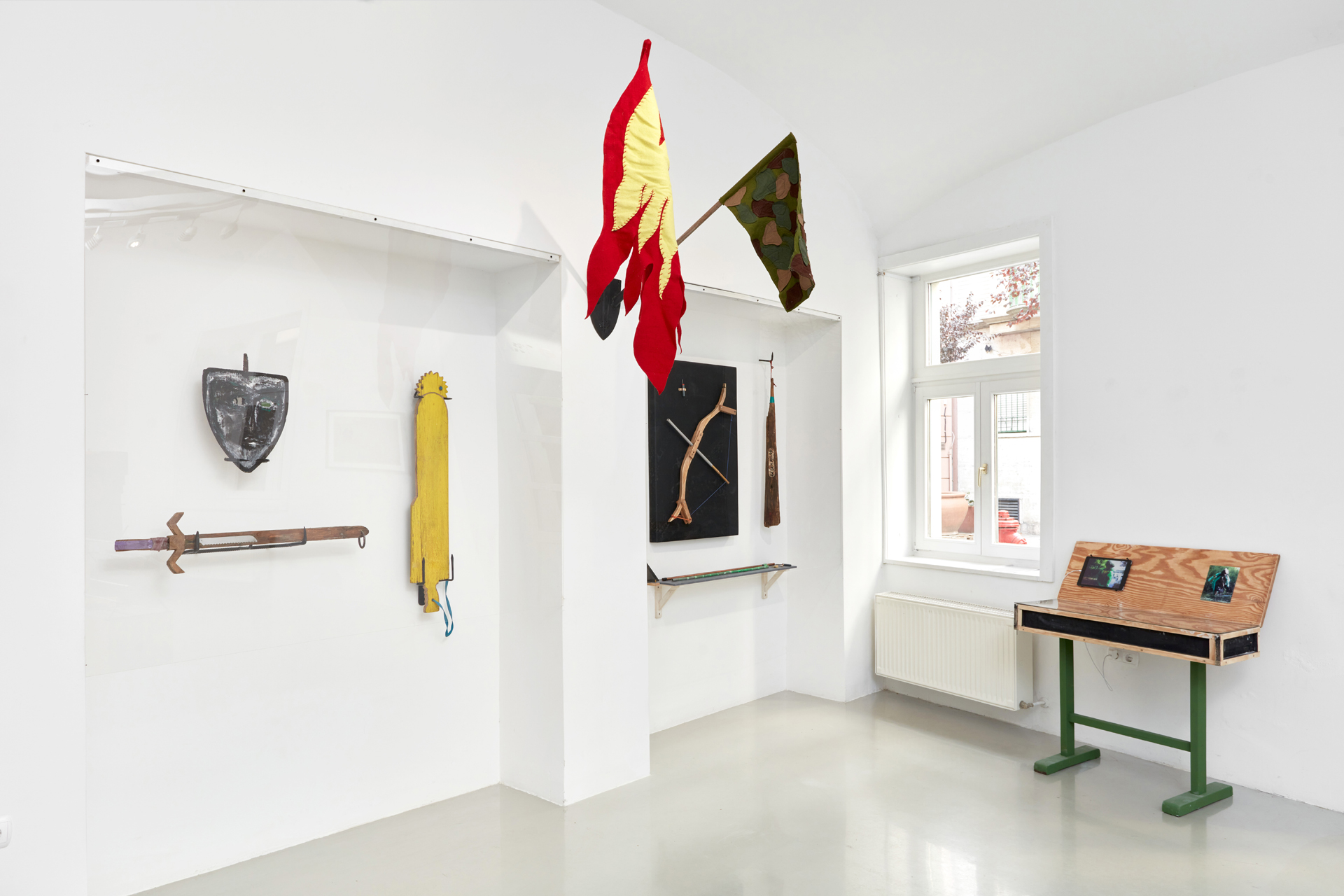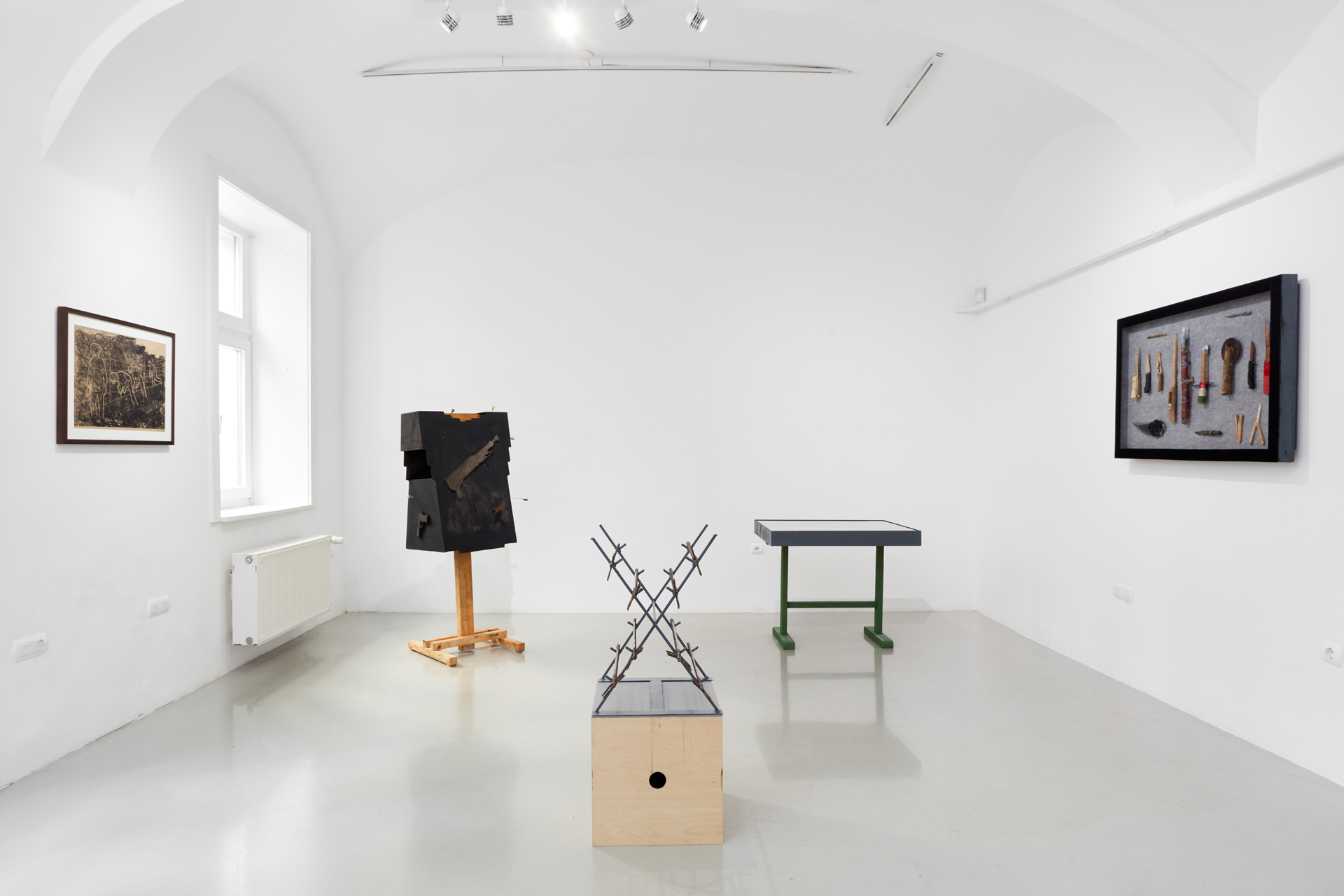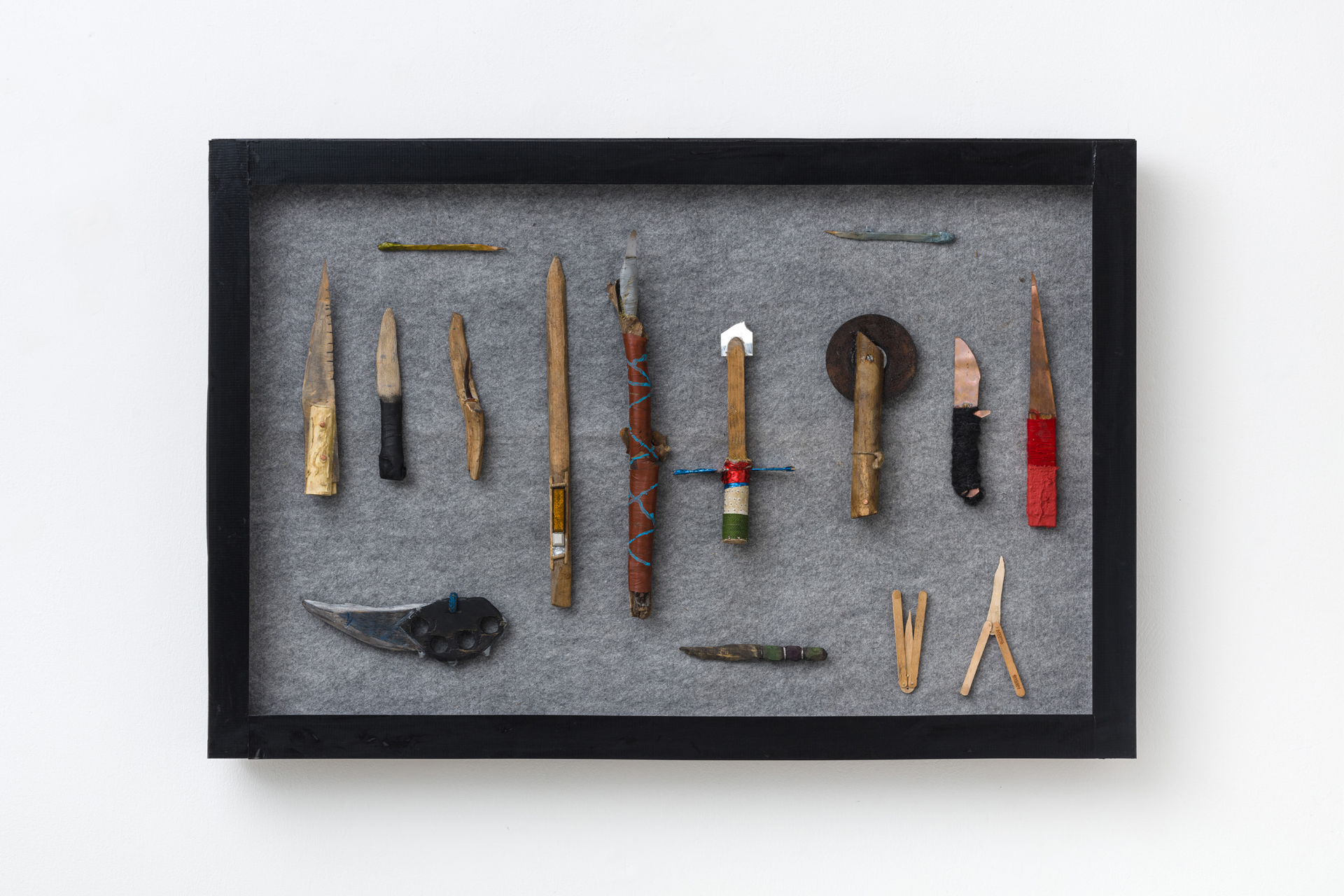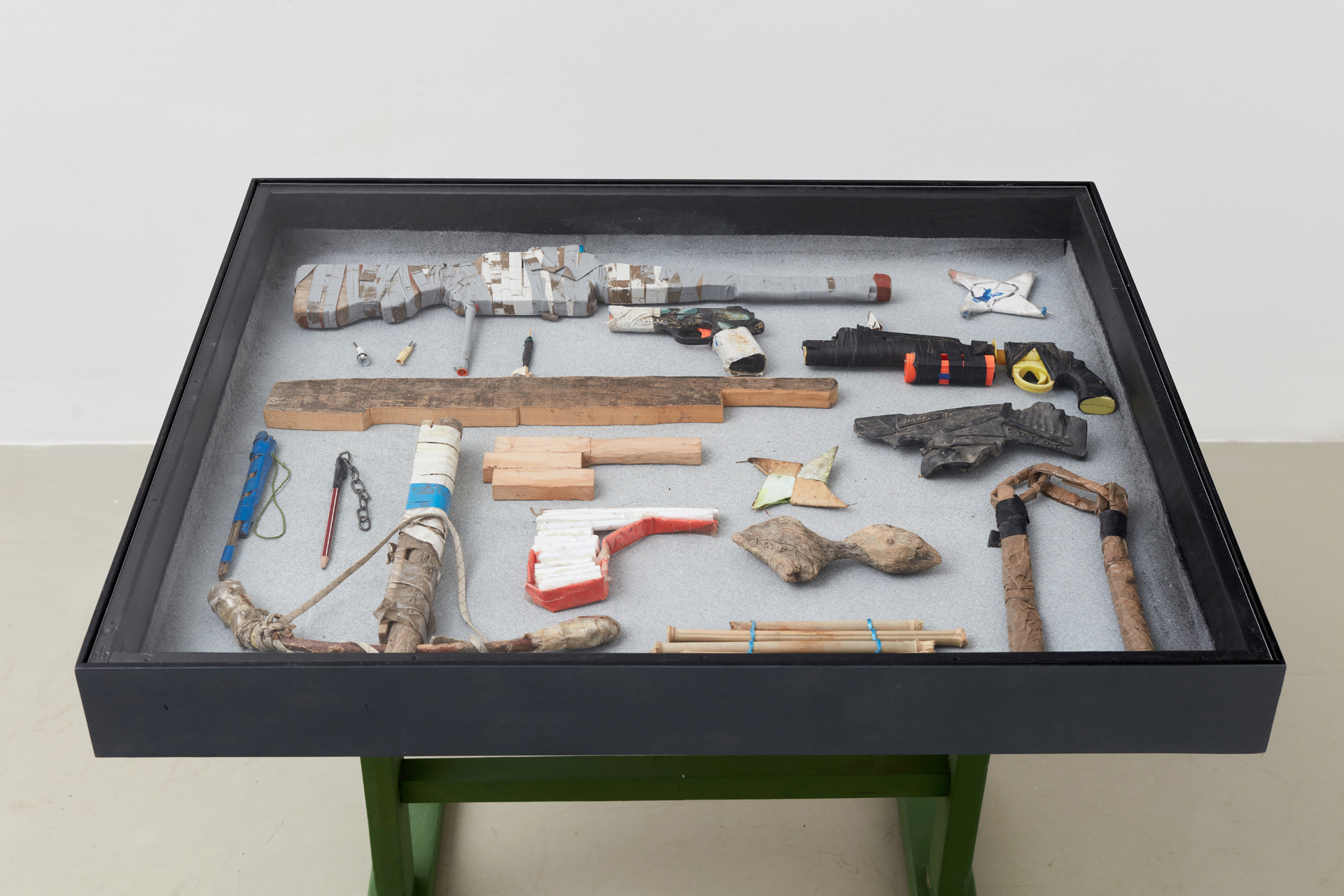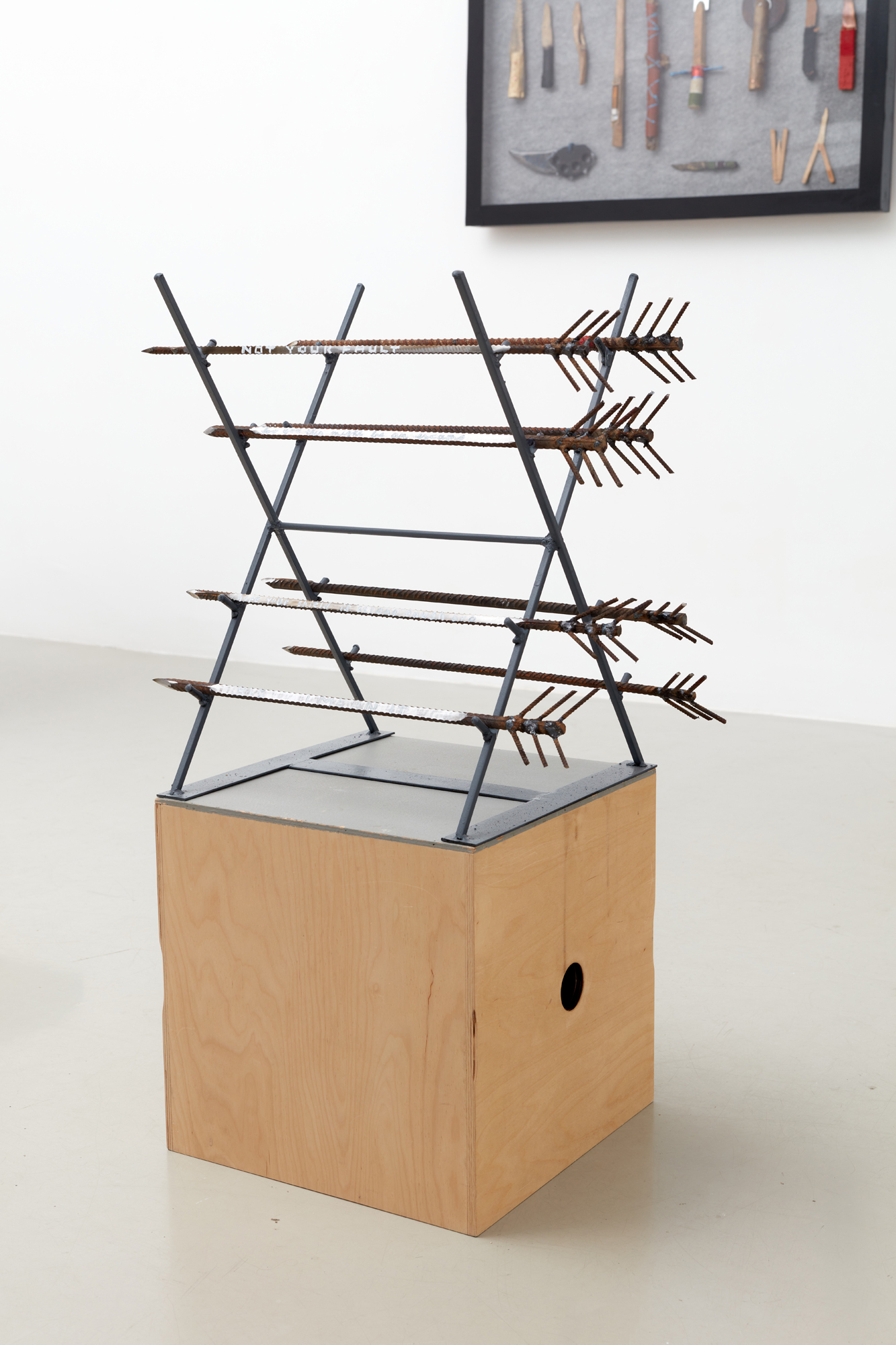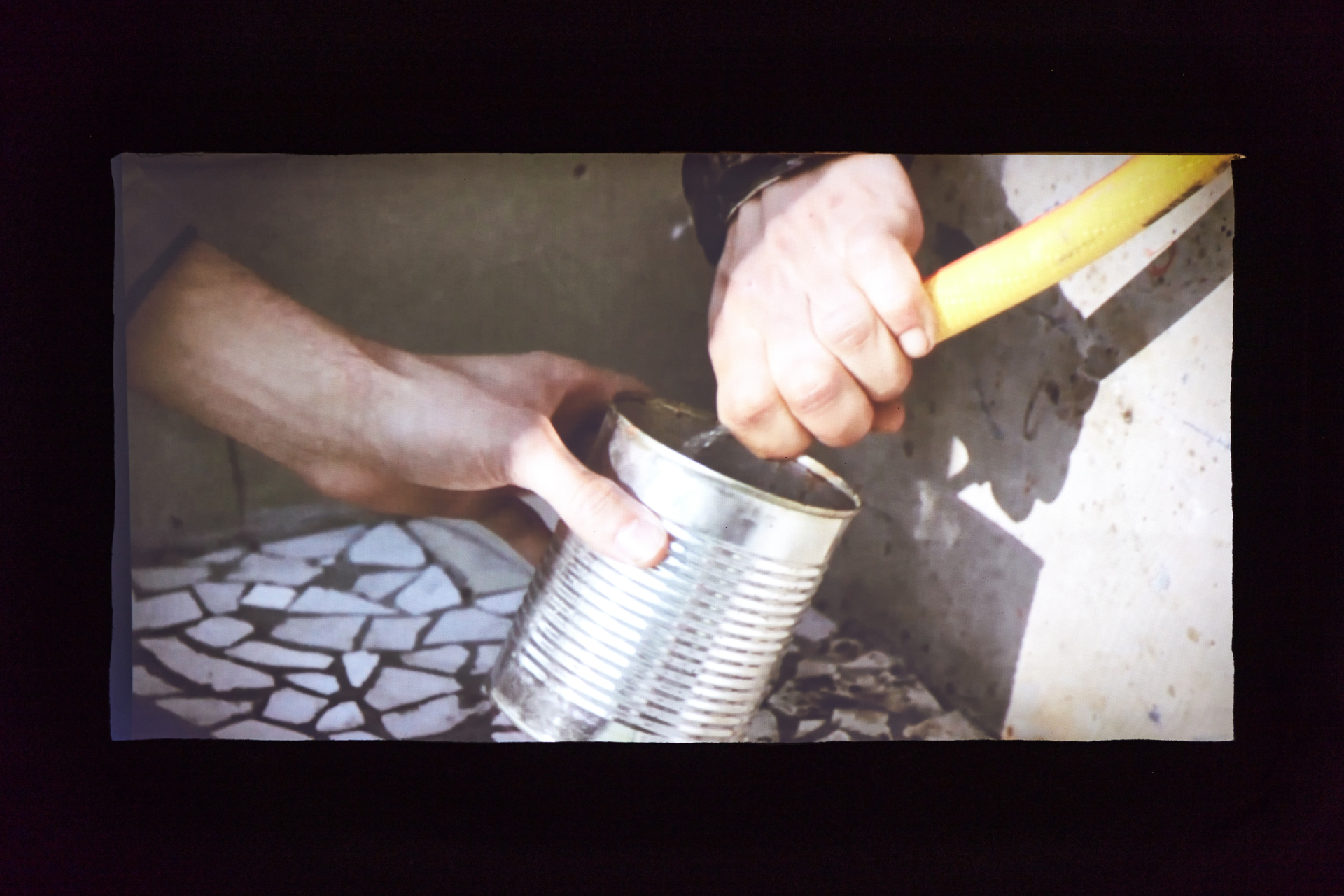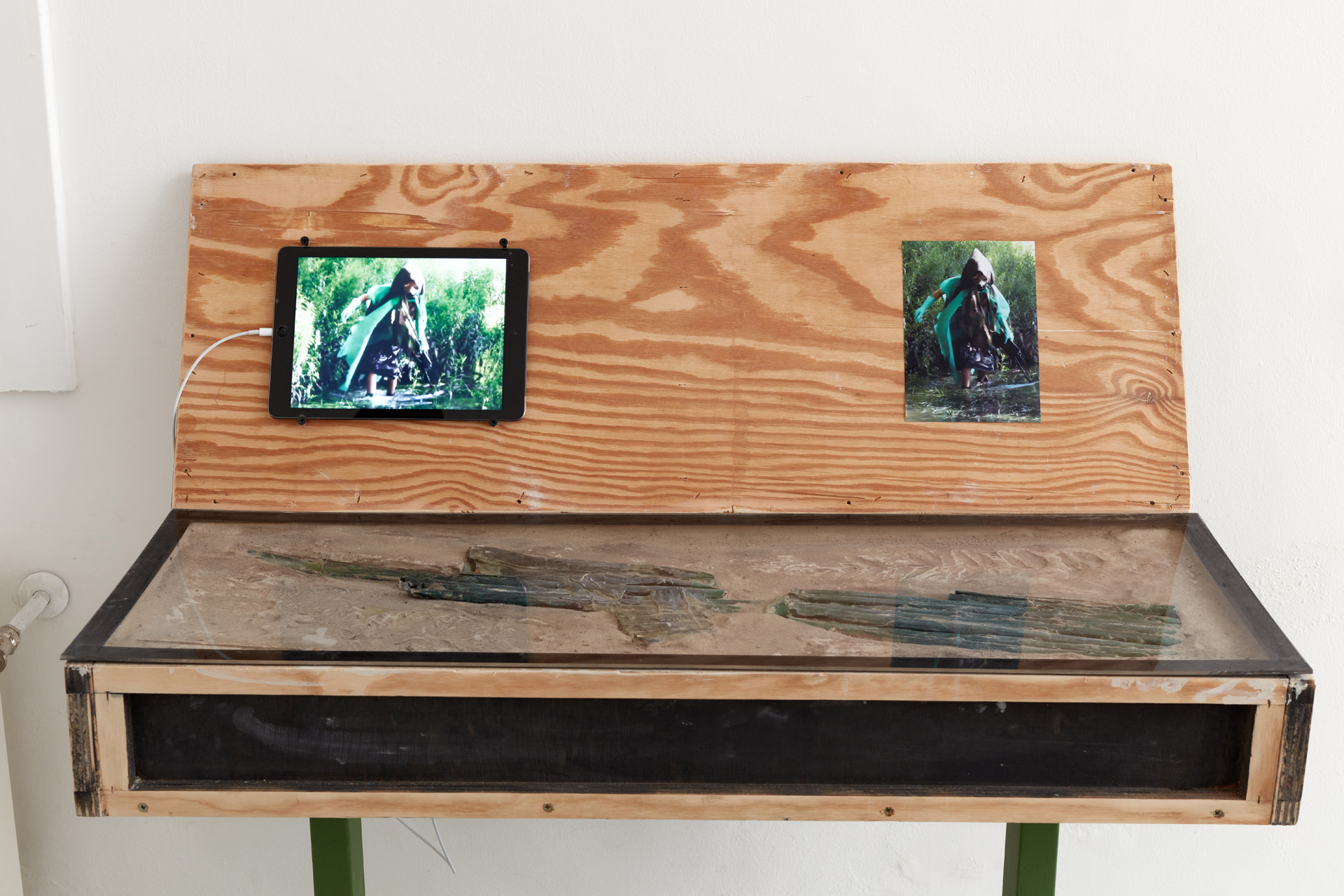Looking at the works of Tamás Kaszás, it is unclear where we are – are we back in the past or in a not-too-distant future that is indebted to the past? Various micro-communities, random crowds of people, children, survivors, are the protagonists of the works – or would be, were the artist more interested in them than in the material culture of these imaginary communities. What kind of culture might grow from the ruins of our civilization? What will be left behind us and what will be worth renewing as ancient knowledge? How do, through the rehabilitation of premodern tools, past and future meet in a time loop, to the backdrop of ecological disaster? The exhibition offers insight into the everyday struggle for survival of these imaginary communities – into rituals and games that are partly familiar and partly cryptic; simultaneously, we encounter the buildings and tools of our own culture, that once seemed permanent, as museum pieces and models. Tamás Kaszás exploits not only the dual or manifold functions of objects but also the tension between everyday objects and objets d’art: the exhibition is a mix of both old and recent works, one incorporated into the other, providing new perspectives and contexts. Films and architectural models serve as a background, or a context, or a home, or a stage, for (toy) weapons (knives, blowguns, bows, darts, etc.) and other objects (flags, shields).
It is not scientific explanations for what is going to happen to us during, and after, an eventual environmental disaster that the works on display are after – instead, through fiction and storytelling, they blur the oppositions that often define our ways of thinking to this day. In this world, weapons are toys, ornaments, museum relics, and actual weapons at the same time; children create their own community where destruction and construction are inseparably linked; co-existence with nature is both a privilege, the sole means of survival, and a constant struggle; and the mystical and the spiritual permeate the pragmatic rituals of day-to-day survival. The exhibition also asks the question, “Are emergencies (wars, climate catastrophes) really the only time when people come together?” Do the bubbles of our individualistic societies first burst when the end is, literally, nigh? In the meantime, we can prepare ourselves for the end by playing a game – like the Mexican children, in the video series by Francis Alÿs dedicated to games, who are playing a real-life FPS with mirrors and sunbeams. Their weapons are both invisible and ubiquitous – they are the light and the sun, and death is only temporary.
Flóra Gadó
photography by Dávid Biró

